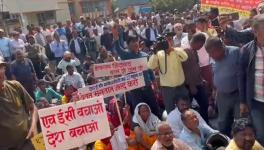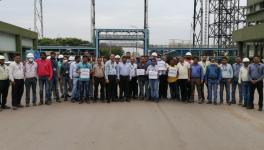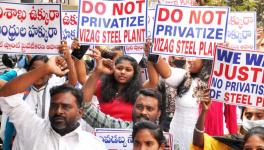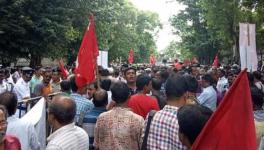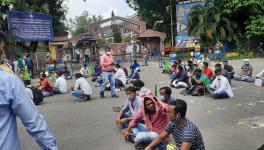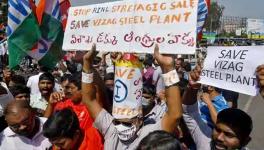Bhilai Steel Blast: No Safety Committee in Plant for Past Two Years
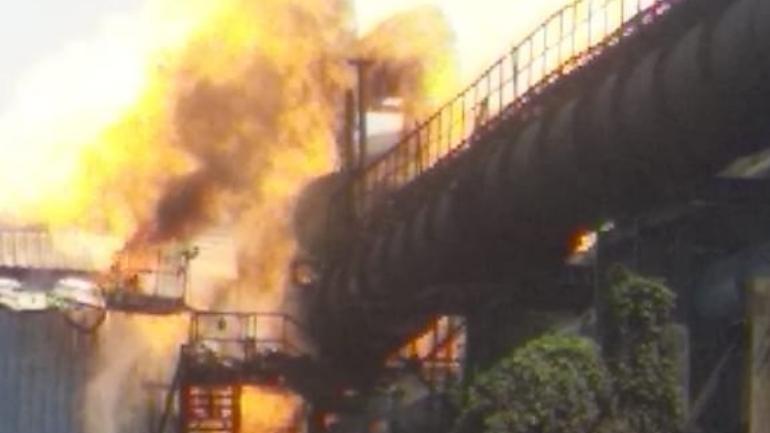
After the deadly explosion in Bhilai Steel Plant on October 9, claiming 12 lives, the Chhattisgarh government’s Industrial Health and Safety Department has, in their preliminary investigation, found that maintenance procedure being carried out the time of the explosion was done “without assessing the dangers”. However, the workers in the plant have claimed that there was no safety committee for the last two years.
“The safety committee has to be formed in the plant with the nominations of the recognised union. As Hindustan Steel Employees Union (HSEU), which is affiliated to the Centre of Indian Trade Unions (CITU), is the only recognised union here. The management was trying to accommodate their persons. This created a dispute, and for the last two years, there has been no safety committee,” said SP Dey, president, HSEU.
Even after an explosion in the blast furnace of Bhilai Steel Plant in June 2014, which resulted in the death of six workers, the apathy allegedly continued. There were three more accidents at the plant that took place on May 8, 9 and 10 in 2018. The chief executive officer of the Bhilai Steel Plant was removed, and two other senior officials were suspended following the current accident.
Also Read: Bhilai Steel Plant: A History of Negligence, Alleges CITU
All the 23 workers, who were present at the time of the accident, are permanent workers, and they are highly skilled. So far, 12 workers have lost their lives. The job which they have been doing requires high discipline and technological precision. The job is hazardous. “Of course, the accident is clearly the outcome of the work culture, not of the work pressure,” said Dey.
Bhilai is an integrated steel plant where the entire process of steel-making takes place. Coca 1 is one of the key units where coke is produced by heating coal in the absence of air. Following this process, coke is produced, and hydrocarbon gases are generated. From these gases, hydrocarbons are extracted. There are two ways of extraction. Earlier, the ammonia was extracted, and all the low crude benzol and high crude benzol were extracted by fractional distillation. But, this is a new unit- battery number 11. The extraction process is somewhat different here. The gas liberated during coke-making is passed through solar oil, and hydrocarbons are absorbed in the solar oil after which recovery of the coal chemicals takes place. But this gas, after the recovery of the hydrocarbon, has high calorific value. So, this gas is used as a fuel in the entire plant.
From battery 11, where the accident had taken place, the main gas line supplies to plant three and the new production units like blast furnace 8, Universal Rail Mill (URM) etc. Another thing is that there are two hazardous gases. One is the blast furnace gas which is odorless and colourless; its presence can’t be sensed. If a person comes in contact with this gas – carbon monoxide – s/he may die very easily, without any significant symptom. But, the second one, coca 1 gas has hydrogen as its major component. The coca 1 gas can be of explosive nature when it comes in contact with the air.
On the day of the accident, Dey said, there was some uneven pressure in the gas line that supplies to the URM and all the new units. So, naturally, it had to be shut down and cleaned, as the residues and hydrocarbons present in the gas line create uneven pressure. So, before cleaning, the gas pipeline was blanked. Blanking means it has to be separated by a plate. The gas line is of capacity 1800 ml. So, the gas line is not continuous throughout the plant. At some places, they are joined with flanges. To blank it, a dummy plate is inserted into it. After closing the walls and after inserting the dummy plate, the maintenance work takes place. Ahead of the dummy plate, there would be coca 1 gas. Before the accident, the process of deblanking – restoring gas line with new units – was being carried out, after maintenance. For that, the dummy plate had to be removed. As it is a highly sensitive and hazardous job, measures were taken, the protocol was signed by all the agencies. The job is done by the Energy Management Department (EMD), and fire brigades were also present there for rescue management. All of a sudden, the fire broke out through the flange after the dummy was removed.
Also Read: Bhilai Steel Plant to Benefit from Adivasi Land Alienation
“The intensity was so much that even the fire brigade personnel and snorkels which were there for the rescue, could not do anything, and they themselves died on the spot. Four of the deceased were firemen, and rest hailed from EMD,” said Dey.
Standard operating practice is that the gas before the dummy has to be kept in positive pressure, so that it cannot suck air from outside. “So, what is being apprehended that there might have been some spark generated. But, measures were also taken to ensure there were no sparks nearby. One possibility is that some static current might have been produced inside that gas line. There are other angles also,” he added.
Dey explained some other lacunas too in the safety management. “In all the units of SAIL, the entire workplace is registered as a single factory. Whereas, in the Bhilai Steel Plant, there are 43 factories. If any incident occurs inside the plant, it will not be considered as an accident inside the factory unless that accident occurs in the premises of the department which is registered as a factory. Because, as per the definitions of the Factory Act, all the departments cannot be registered as a factory. Sixteen departments including EMD are not factories in the plant.”
Get the latest reports & analysis with people's perspective on Protests, movements & deep analytical videos, discussions of the current affairs in your Telegram app. Subscribe to NewsClick's Telegram channel & get Real-Time updates on stories, as they get published on our website.









